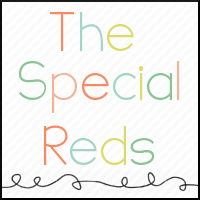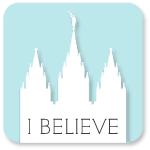My daughter, who is almost 12 now, has autism. She is afraid to
swim, so she attends year-round swim lessons. Each week, the teacher asks her
to jump in the deep part of the pool: “On the count of three, I want you to
jump in, okay? One…two…” She pauses before three, and begins the count again.
“One…two…THREE!” Enthusiastic threes aren’t enough for my child on the
spectrum. Jumping into a pool means my daughter is going underwater, facing the
biggest fear of her life.
Eventually she did jump in—and after resurfacing, she scrambled for the wall, screaming, no doubt traumatized, like the fear had been delivered from her head and born into her body. It broke my heart to see her this way. But this first plunge took her one step closer to feeling normal about swimming, and every plunge thereafter has purged a layer of fear, and will eventually give way to normalcy.
Eventually she did jump in—and after resurfacing, she scrambled for the wall, screaming, no doubt traumatized, like the fear had been delivered from her head and born into her body. It broke my heart to see her this way. But this first plunge took her one step closer to feeling normal about swimming, and every plunge thereafter has purged a layer of fear, and will eventually give way to normalcy.
I have three redheaded children. My first child, a girl, was born
on her due date with no known issues. Five years later, after many
developmental delays, she was diagnosed with autism. My second child, a boy,
was born at a healthy weight, with two large marks on his stomach. Three weeks
later, he was diagnosed with mastocytosis, a rare blood disorder. My third
child, a boy, was born once ounce heavier than his brother, but had trouble
nursing. Three hours later, he was diagnosed with a bilateral cleft palate.
As you can see, normalcy isn’t something I deal with as a mother. But it became normal the more I learned about them. Just like my daughter, I’ve stood on the edge of my doubts as a mother, wishing I didn’t have to swim the unknown waters of my children’s diagnoses, wishing I could just have normal. I never expected to have children who had challenges, who weren’t normal in the eyes of the world. Yet here I am, with three differently diagnosed children, treading an ocean of uncertainties with a tide I have no control over, struggling to keep my head above these waters of isolation, confusion, and fear. We all stand on our own “edges of normal” for a while until we are ready to jump into the uncertain waters. For this post, I want to focus on my daughter with autism.
As you can see, normalcy isn’t something I deal with as a mother. But it became normal the more I learned about them. Just like my daughter, I’ve stood on the edge of my doubts as a mother, wishing I didn’t have to swim the unknown waters of my children’s diagnoses, wishing I could just have normal. I never expected to have children who had challenges, who weren’t normal in the eyes of the world. Yet here I am, with three differently diagnosed children, treading an ocean of uncertainties with a tide I have no control over, struggling to keep my head above these waters of isolation, confusion, and fear. We all stand on our own “edges of normal” for a while until we are ready to jump into the uncertain waters. For this post, I want to focus on my daughter with autism.
Before my daughter was
diagnosed with autism, my mind was clouded with concerns. I wondered why she
didn’t smile all the time or make good eye contact. I worried about her delayed
milestones. Instead of facing these worries, I tucked each one neatly into the
farthest corner of my mind, a hidden pocket in my brain, thinking that if the
worries rested there, they might not amount to anything. Besides, facing these
concerns might mean my cream-faced, button-nosed redhead wasn’t normal, and I
certainly didn’t want that. Normal was safe and predictable, and in my comfort
zone.
So I tiptoed on that edge until I was given the first push, or nudge, closer to the edge, by a neighbor who knocked on my door when my daughter was 17 months old. I invited her in, and she sat down on my scraggly thrift-store couch with a very worried look, and said, “I think your daughter has autism.”
My hidden brain pocket was ripped open in an instant. Every worry
I’d had since her birth was thundering before my eyes, and soon that thunder
gave way to rain. Tears, sobs, and big heaving breaths filled that tiny
apartment living room. Hugs were shared, and after our goodbyes, I sat with my
redhead on my lap for a good hour until the rainfall dissipated. I tried
telling my brain that what my neighbor said wasn’t true. Then Google became my
new best friend—sometimes it confirmed my hopes, other times, it confirmed my fears.
So I said goodbye to Google and kept walking the balance beam between normal
and un-normal.
Then I got my next push toward the edge, this time from my mom.
She gave me a book, which I devoured and highlighted and dog-eared and
margin-scribbled. Then came an official diagnosis of sensory processing
disorder, and the following year, the autism diagnosis.
I stood looking out over the edge into the giant ocean of autism, and had no choice but to jump in. And while treading the choppy waters of a fresh autism diagnosis for about a year, I finally set foot on an island of self-discovery: maybe she wouldn’t be considered normal to everyone else, but she’s normal to me because she’s mine. This was going to be my new normal—I could either embrace it or be afraid.
Like my daughter’s fear of water, un-normal things can’t be normal until you face the unknown and accept it as truth, as reality, as your inevitable life. You have to jump in all the way.
I stood looking out over the edge into the giant ocean of autism, and had no choice but to jump in. And while treading the choppy waters of a fresh autism diagnosis for about a year, I finally set foot on an island of self-discovery: maybe she wouldn’t be considered normal to everyone else, but she’s normal to me because she’s mine. This was going to be my new normal—I could either embrace it or be afraid.
Like my daughter’s fear of water, un-normal things can’t be normal until you face the unknown and accept it as truth, as reality, as your inevitable life. You have to jump in all the way.
So I ask you, what is normal, anyway? Who can define normal? Normal
for whom, compared to what? Doesn’t what you’ve been given become normal once
it’s understood and accepted? Normal is so relative. I might have teetered on
the edge of normal in the beginning, because facing uncertainty is difficult.
It wasn’t until I let go of my idea of normal and made the jump into that vast
ocean of my fears that things became normal. And after what I’ve been through,
I must say, I’m a really good swimmer now, too.






















No comments:
Post a Comment